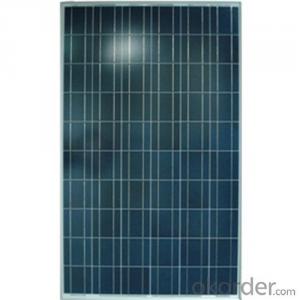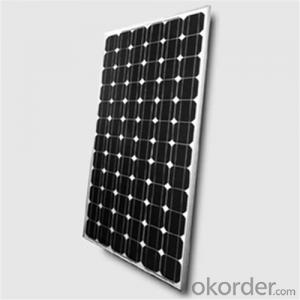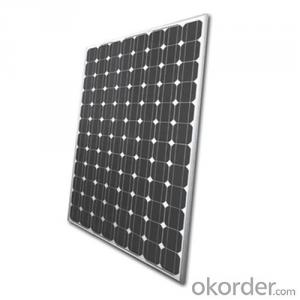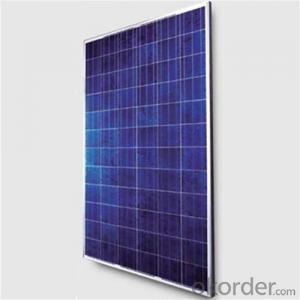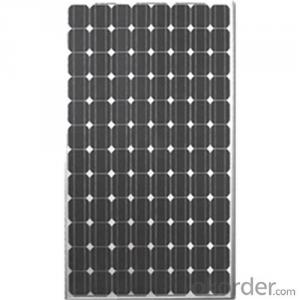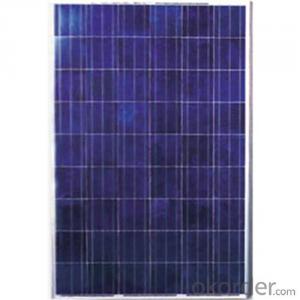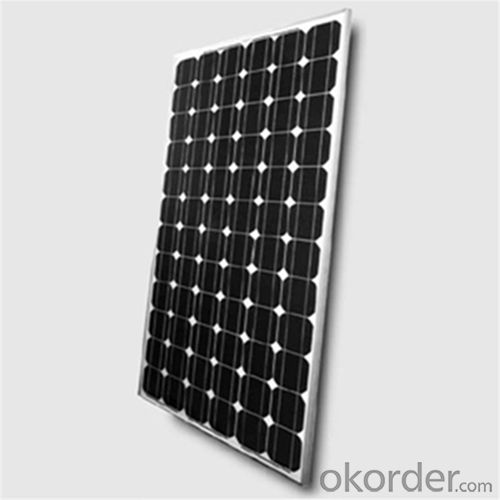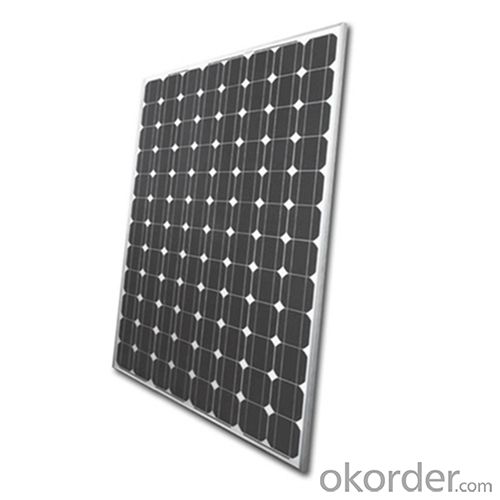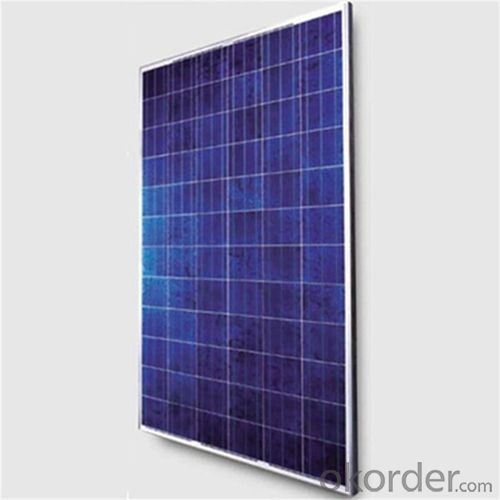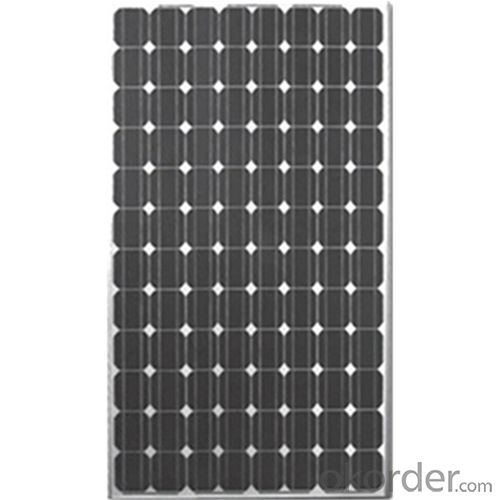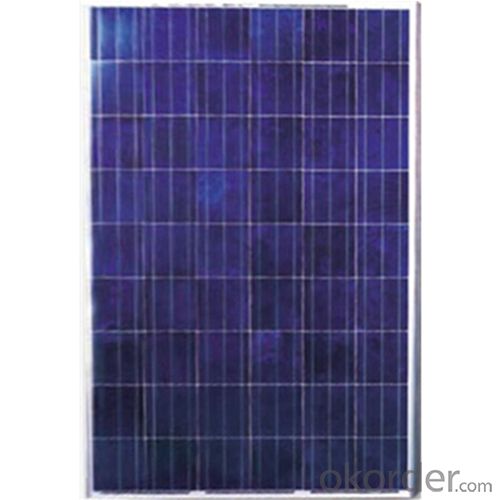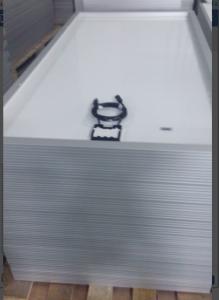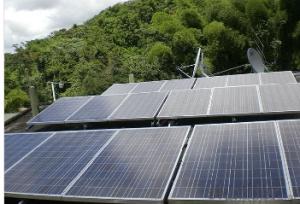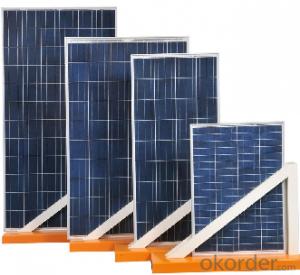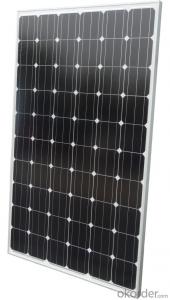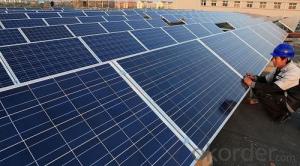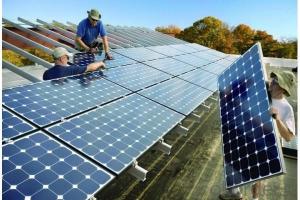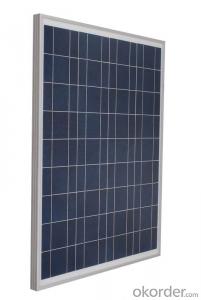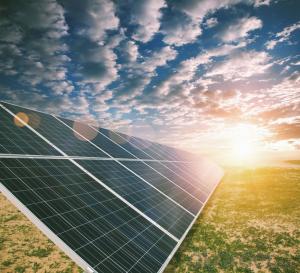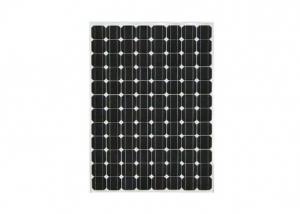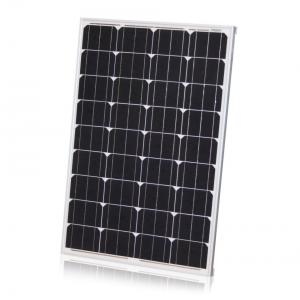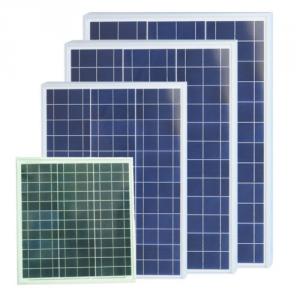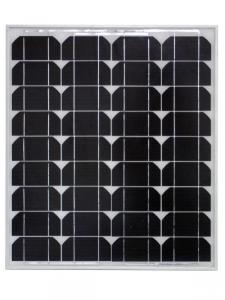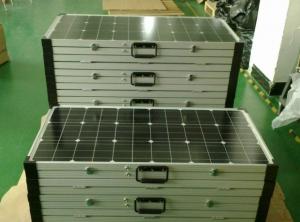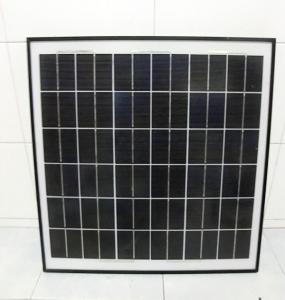Solar Panels Katy - Monocrystalline Solar Panel 265W Good Quality
- Loading Port:
- Shanghai
- Payment Terms:
- TT OR LC
- Min Order Qty:
- 6000 watt
- Supply Capability:
- 6700000 watt/month
OKorder Service Pledge
OKorder Financial Service
You Might Also Like
Specification
Benefits of Solar Power:
Following to RMI, Balance-of-System (BoS) elements, this is, non-module cost of non-microinverter solar modules (as wiring, converters, racking systems and various components) make up about half of the total costs of installations.
For merchant solar power stations, where the electricity is being sold into the electricity transmission network, the cost of solar energy will need to match the wholesale electricity price. This point is sometimes called 'wholesale grid parity' or 'busbar parity'
Specifications of Mono Solar Panel
Average pricing information divides in three pricing categories: those buying small quantities (modules of all sizes in the kilowatt range annually), mid-range buyers (typically up to 10 MWp annually), and large quantity buyers (self-explanatory—and with access to the lowest prices). Over the long term there is clearly a systematic reduction in the price of cells and modules. For example in 2012 it was estimated that the quantity cost per watt was about US$0.60, which was 250 times lower than the cost in 1970 of US$150.
Real world prices depend a great deal on local weather conditions. In a cloudy country such as the United Kingdom, price per installed kW is higher than in sunnier countries like Spain.
Mechanical data and design
Format | 156mm x 156mm±0.5mm |
Thickness | 210μm±40μm |
Front(-) | 1.5mm bus bar (silver),blue anti-reflection coating (silicon nitride) |
Back (+) | 2.5mm wide soldering pads (sliver) back surface field (aluminium) |
Temperature Coefficient of Cells
Voc. Temp.coef.%/K | -0.35% |
Isc. Temp.coef .%/K | +0.024%/K |
Pm.Temp.coef. %/K | -0.47%/K |
Electrical Characteristic
Effiency(%) | Pmpp(W) | Umpp(V) | Impp(A) | Uoc(V) | Isc(A) | FF(%) |
18.35 | 4.384 | 0.526 | 8.333 | 0.63 | 8.877 | 78.39% |
18.20 | 4.349 | 0.526 | 8.263 | 0.63 | 8.789 | 78.54% |
18.05 | 4.313 | 0.525 | 8.216 | 0.63 | 8.741 | 78.32% |
17.90 | 4.277 | 0.524 | 8.161 | 0.625 | 8.713 | 78.04% |
17.75 | 4.241 | 0.523 | 8.116 | 0.625 | 8.678 | 77.70% |
17.60 | 4.206 | 0.521 | 8.073 | 0.625 | 8.657 | 77.36% |
17.45 | 4.170 | 0.519 | 8.039 | 0.625 | 8.633 | 76.92% |
17.30 | 4.134 | 0.517 | 8.004 | 0.625 | 8.622 | 76.59% |
17.15 | 4.096 | 0.516 | 7.938 | 0.625 | 8.537 | 76.80% |
17.00 | 4.062 | 0.512 | 7.933 | 0.625 | 8.531 | 76.18% |
16.75 | 4.002 | 0.511 | 7.828 | 0.625 | 8.499 | 75.34% |
16.50 | 3.940 | 0.510 | 7.731 | 0.625 | 8.484 | 74.36% |
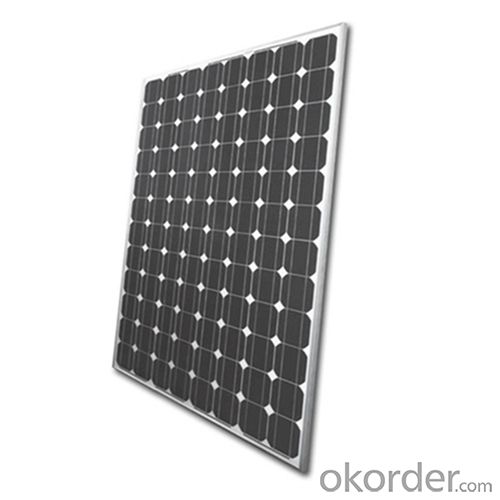
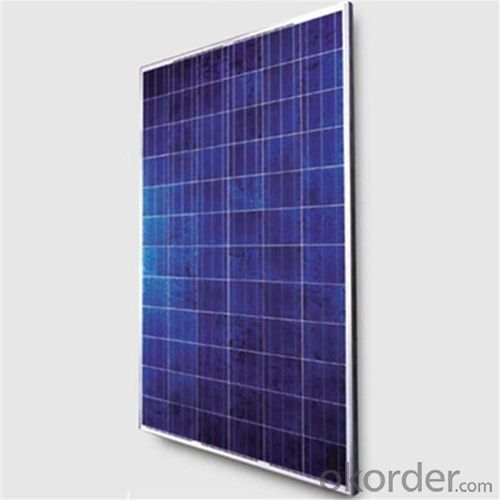
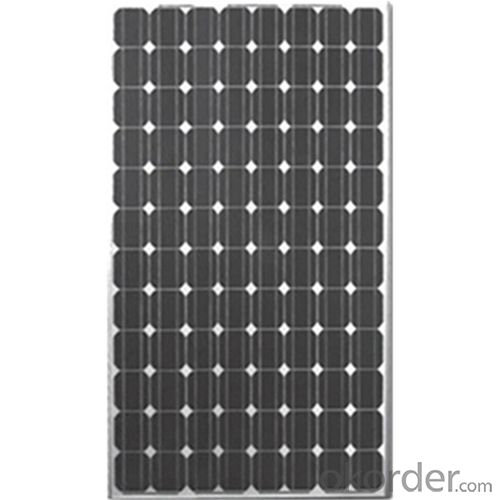
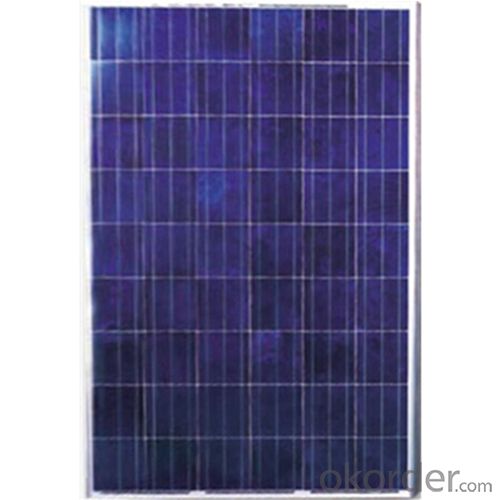
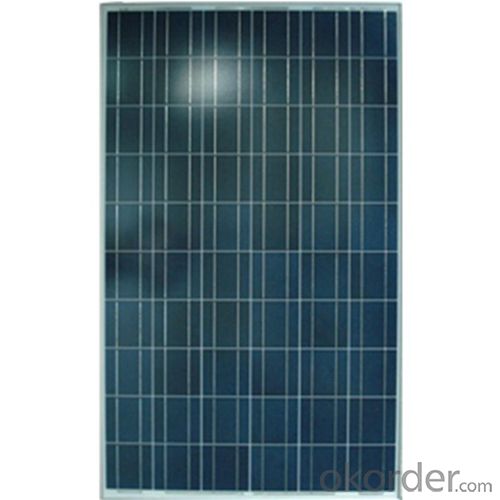
FAQ
Q: Do you have the CE, TUV, UL Certification?
A: We’ve already passed all the tests, and any certificate is available.
Q: Can you provide the peripheral products of the solar panels, such as the battery, controller, and inverter? If so, can you tell me how do they match each other
A: Actually we are only manufacturer of solar panels, but we could try to source them for you in China if you need. We could provide you an optimal system design to instruct you how to install.
Q: What is your warranty system?
A: For c-Si panel: 25years output warranty for no less than 80% of performance, 10 years output warranty for no less than 90% of performance. Free from material and workmanship defects within 5 years.
For a-Si panel: 20 years output warranty for no less than 80% of performance, 10 years output warranty for no less than 90% of performance. Free from material and workmanship defects within 2 years.
- Q: Can solar panels be installed on military installations?
- Yes, solar panels can be installed on military installations. In fact, many military installations around the world have already embraced solar energy as a sustainable and cost-effective solution for meeting their power needs. Solar panels help reduce reliance on traditional energy sources, provide a more secure and resilient energy infrastructure, and contribute to the overall goal of creating a greener and more sustainable military.
- Q: Can solar panels be integrated into windows?
- Yes, solar panels can be integrated into windows. This innovative technology is called Building Integrated Photovoltaics (BIPV), where solar cells are incorporated into the glass panels of windows. BIPV allows for the generation of renewable energy while still maintaining the functionality and transparency of windows.
- Q: Exactly How much power will this kit produce? for example. Will it only be able to power the 2 light throughout an entire day or would it be able to power a couple TV's with a couple lights. Or a Refrigerator? washer dryer? I'm just wondering exactly what it will be able to do and if it's worth paying $200 for if it'll only power two lights. Don't get me wrong, That's great and will make a difference but i'm looking for something that will make a little bit of a bigger difference. Would the 80 watt monocrystalline solar panel be much better? if so, what would it be able to power? double?
- This Site Might Help You. RE: 45 Watt Solar Panel Kit Harbor Freight? Exactly How much power will this kit produce? for example. Will it only be able to power the 2 light throughout an entire day or would it be able to power a couple TV's with a couple lights. Or a Refrigerator? washer dryer? I'm just wondering exactly what it will be able to do and if...
- Q: How do solar panels affect the resale value of a home?
- Solar panels can have a positive impact on the resale value of a home. Studies suggest that homes with solar panels tend to sell faster and at a higher price compared to similar homes without solar installations. Buyers appreciate the potential energy savings and environmental benefits associated with solar panels, making them a desirable feature in today's real estate market.
- Q: Can solar panels be used in areas with high levels of volcanic activity?
- Yes, solar panels can be used in areas with high levels of volcanic activity. Volcanic activity does not directly affect the functionality of solar panels as long as they are installed safely. However, it is important to consider additional factors such as ash fallout, potential acid rain, and the need for regular cleaning and maintenance due to the volcanic environment.
- Q: I was looking at thin flexible solar panels as solar panels 500w a option to upgrade a 20w solar panel I have permanently mounted to the roof of a home made camper van.Why I was thinking flexible is at just 2mm thin they can be glued down and being flexible they will follow the contour of the rounded shape of the roof of my camper (boxy standard solar panel spoils the lines a little)Another reason is no glass to brake when traveling on dirt tracks(though I am surprised mine hasn't broken yet after thousands of km on corrugated dirt roads). Finally there is a weight saving at only /3 the weight or less then a standard glass panel.There are different grades of flex PV some of the more expensive ones are very flexible with extremely thin backing at around .5mm The ones I was looking at are cheaper and at around 2mm with a thin flexible aluminum backing.$250 is about the going rate for 20w OKorder job. Below is a pic of a smaller one 60w or so.Has anyone had any experience with them?
- but it's very interesting and I wanted to ask you. In your case this is good solution, but I saw flexible panels in OKorder much cheaper than 250$. This is the price of standard solar panel 20w. Maybe your panels with better efficiency? I know that flexible panels are less than half efficient than regular panels, thats why you need twise more area to get the same output. What is your usage of this energy in this van? I know there are many ideas of solar cars, but if this solution is efficent enough today? Thanks!
- Q: I have some property off the grid and am looking to add solar power
- there are a large style of image voltaic panels accessible as we talk's. the project of the performance is the proccess of replacing, those cells use the photons of the solar to react with the ( Si compound contained in the cellular) because of the little ingredient that cellular's are literally a fragment of those capacity is switched over, undergo in recommendations that image voltaic cells are paper skinny and the rather situation of those cells are the voltage no longer the amps. A unmarried 3x6 inches image voltaic cells can produce 3.6 amps yet actually 0.5 volts.
- Q: The colder a solar panel gets the more efficient it seems to be. As the panel warms, it loses some efficiency. Why is this so? Please explain in a way you would expect a high school kid to understand it, as I am a high-schooler and i have to explain this to other high-schoolers.
- For water heater type of solar panel the hot panel has more radiation losses reducing the heat available to be transferred to the water. In PV panels it has got to be characteristics of the PV cells. If the conversion efficiency drops with temperature rise then only this can happen. PV=photo-voltaic
- Q: I don't remember what number exactly but it's in the single digits. This number represents how efficient solar panels are at capturing the sun's rays and converting it into electricity.Why?
- The most important thing is for how much time the sun shines at your place. If you are living at a place where the sun shines just for to 2 hours then installing a solar panel will be of no use. But if sun shines at least 9-0 hours then solar panels will be in use.
- Q: Can solar panels be used to power a water pump?
- Yes, solar panels can be used to power a water pump. Solar panels convert sunlight into electricity, which can then be used to power a water pump. This allows for a sustainable and renewable energy source to operate the pump without relying on conventional electricity grids or fossil fuels.
Send your message to us
Solar Panels Katy - Monocrystalline Solar Panel 265W Good Quality
- Loading Port:
- Shanghai
- Payment Terms:
- TT OR LC
- Min Order Qty:
- 6000 watt
- Supply Capability:
- 6700000 watt/month
OKorder Service Pledge
OKorder Financial Service
Similar products
Hot products
Hot Searches
Related keywords
